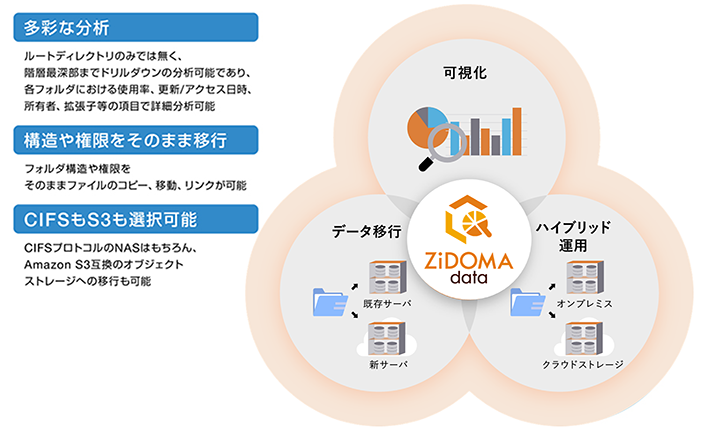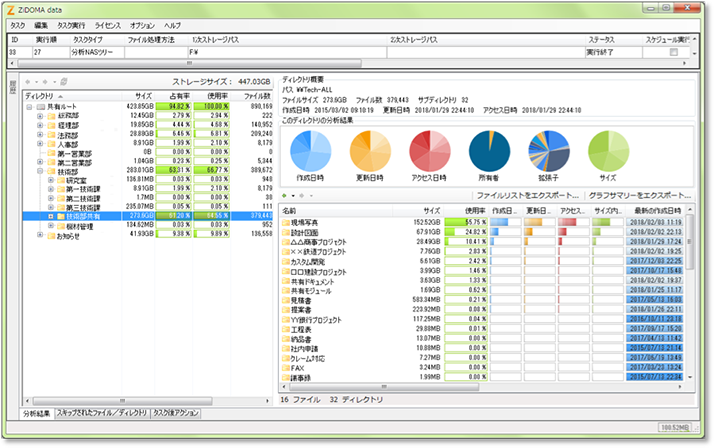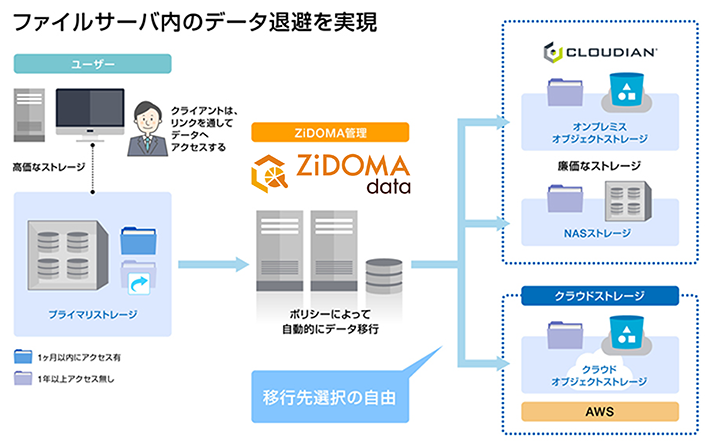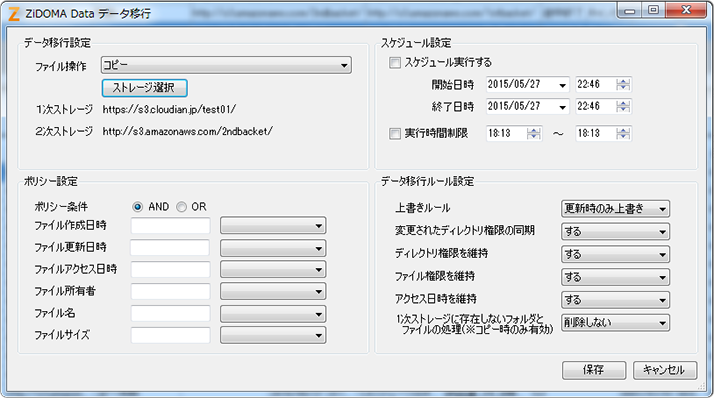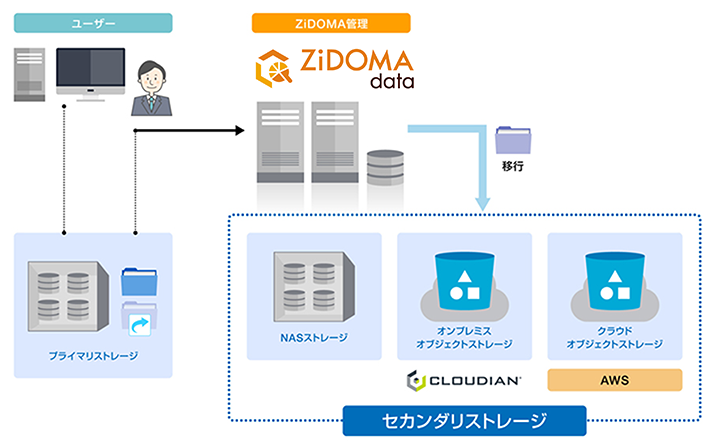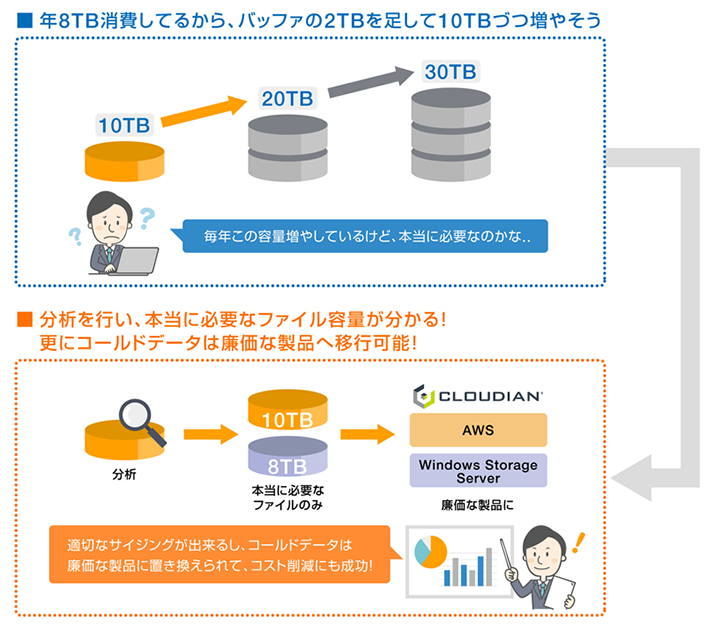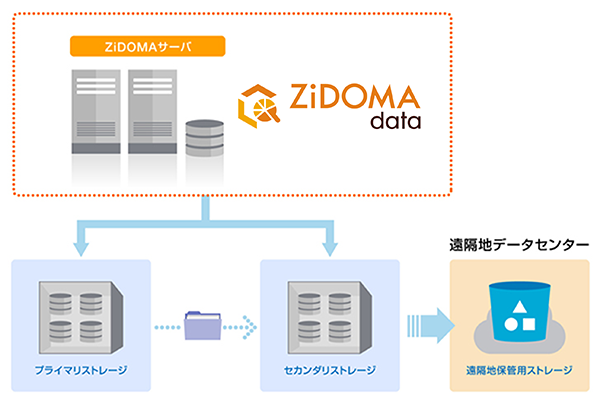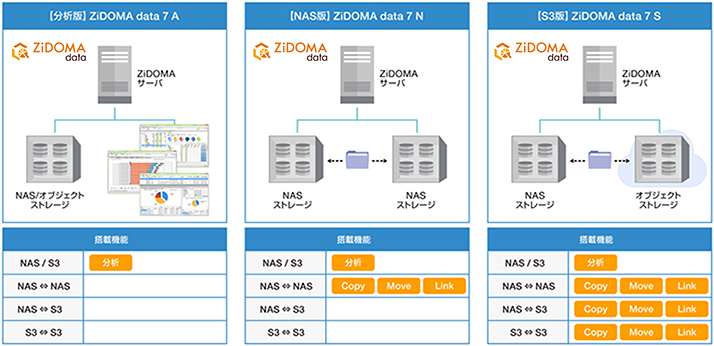ZiDOMA data
Overview
With the increase in mobile, social, big data, and cloud, which is the third-party platform, the amount of data stored in companies and organizations has increased significantly.
However, 70% of the stored data* is said to be cold data.
ZiDOMA data is a solution that allows you to analyze within a black box file server and easily migrate data.
*Cold data: Data that has not been accessed for more than one year
Features of the Solution
With ZiDOMA data, you can solve your file server problems.
ZiDOMA data helps in visualizing the use status of finite resources through extensive analysis functions, which makes it possible to run appropriate operations such as capacity compression and retaining only the data that is truly necessary.
In addition to analysis, the system also includes a migration function, so that unneeded files can be relocated to appropriate storage for each customer based on the results of the analysis.
We solve your file server problems by combining "our extensive analysis functions with intuitive migration functions."
Overview of Function
1. Provision of various analysis items
In the file server organization until now, individuals often decide at their own discretion which files are no longer needed, and then delete or move them.
ZiDOMA data allows you to analyze unwanted and movable files based on various analysis items, making it possible to visualize file server without much effort and cost.
Analysis Items Provided
- Utilization
- Creation date and time
- Update date and time
- Access date and time
- Owner
- Extension
- Size
- Latest creation date and time
2. Choice of many migration destinations
ZiDOMA data supports migration to NAS storage as well as object storage and cloud storage.
It manages the ever-increasing amount of data without much cost and effort by automatically migrating the data from primary storage to inexpensive secondary or object storage.
It also supports migration from object storage to NAS storage, so it is possible to propose a hybrid environment that utilizes hierarchical data and the advantages of each type of storage by combining them.
3. Folder structure and permissions can be migrated as is
Even if data is migrated, the task of setting the data on the destination server also puts a lot of burden on the administrator.
ZiDOMA data allows you to copy, move, and link folders without changing their structure and permissions.
This reduces the workload and migration time by reducing the amount of work on the migration destination server.
4. Automation by setting
Both analysis and migration can be automated through configuration using ZiDOMA data.
Once set up, it automatically analyzes and migrates the data, which reduces the burden on the administrator.
The settings can be changed at any time, which offers flexibility to each individual in charge.
Use Cases
1. Analysis and data migration avoids file server expansion
- ZiDOMA data manages the ever-increasing amount of data without much cost and effort by automatically migrating the data from primary storage to inexpensive secondary or object storage.
- Data copy and move functions can also be used for backup and saving.
- The saved files can be retrieved by the user himself via a link file.
2. Flexible response to insufficient file server capacity
Appropriate sizing is available
By using ZiDOMA data and analyzing the existing environment, cold data that is accessed infrequently can be moved to other inexpensive file servers (NAS servers) or Amazon S3, and only the truly necessary data can be stored on the main file server. This eliminates the need to continuously increase the disk capacity and leads to significant cost saving.
Planning is possible
With ZiDOMA data, you can predict the exhaustion of disk space on file servers in advance, and plan accordingly to secure budgets, request proposal to system integrators, and avoid the risk of working at a time when users are unlikely to use the server.
In addition, by running ZiDOMA data analysis on a regular basis, it is possible to analyze the increasing trend of disk usage, so you can make plans such as "If we continue to use the data at this rate, the disk space will run out in XX years", "Apply for a budget one year before the disk space runs out", "Request other departments at an early stage", etc.
Reduced man-hours
ZiDOMA data enables one-touch visualization of file servers with various analysis, including graph of overall file server usage, graph of usage by public directory, file owners, and last access date of files, which dramatically reduces the effort required to create reports and contributes to a reduction in management man-hours for information system personnel.
3. Disaster countermeasures
Redundancy measures and non-stop operation of mission-critical systems have been promoted for years.
So, what is the disaster preparedness for file servers? Disaster countermeasures are also necessary for file servers, where data continues to increase daily.
ZiDOMA data makes it possible to classify important data that must be duplicated by analyzing the file server, and the classified data can be duplicated on a remote file server using copy function of ZiDOMA data.
Furthermore, ZiDOMA data provides DR function independent of the storage manufacturer.
4. Mass data migration
ZiDOMA data is the best choice if you want to migrate data easily when installing a new storage system, or if you want to perform data migration automatically without human intervention.
It is possible to easily migrate only necessary data from old storage to new storage.
5. Utilization with analysis function
Analysis tasks can be scheduled and executed when reports such as weekly or monthly reports are required, which allows each department to keep track of who is using the server and how much they are using it.
This also allows the company to calculate the capacity used by each department within the company and charge each department based on the amount of file server usage.
Furthermore, it can also be used as a sales tool, for example, to analyze the current status of end-user's environment and propose appropriate storage solution, or if the company wants to implement its own storage analysis service.
Form of Provision
Product system
License system
| Normal license | Perpetual license sales |
|---|---|
| Subscription license | Annual usage rights sales (renewed annually) |
| Data migration project license | 1 project (limited to 6 months) |
*Each license is a server license for one server (up to 2 CPUs) on which ZiDOMA data operates, regardless of whether it is physical or virtual.






